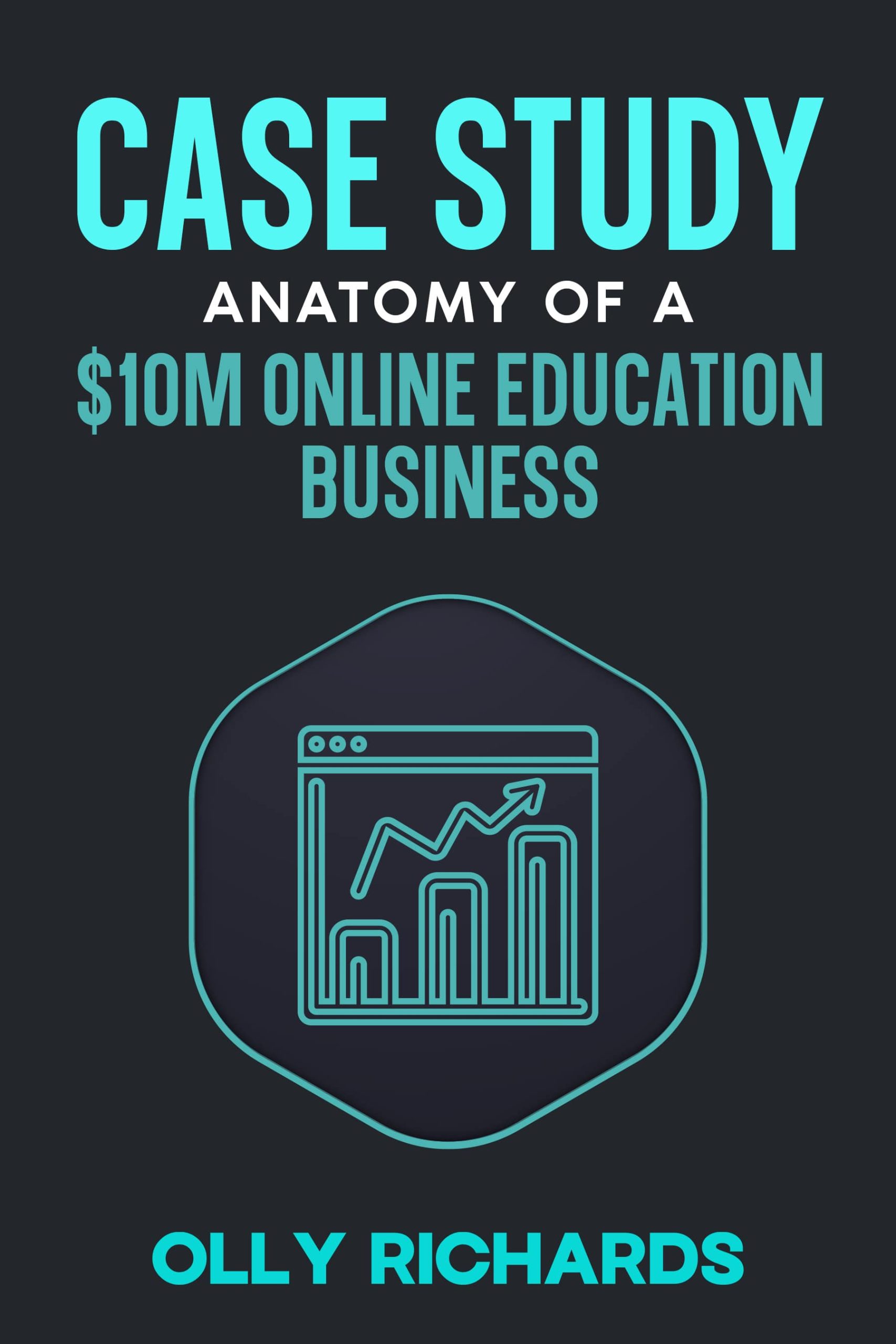A lot of my day-to-day work is on creative projects.
Sometimes, it’s doing the creation myself, such as writing this newsletter.
Often, it’s overseeing the creation:
- Multiple YouTube channels
- Facebook Ads
- Sales pages
Other times, I’m just posturing on Twitter.
From all the work I do on content, I’ve realised something important:
It’s the final 5% of effort where you get your big results.

Not just results, BIG results.
You’ve finished a new piece of content…
On paper, it’s ready…
But there’s something not quite right…
So you ask: “What’s the missing piece that will take this from good to great?”
That’s the final 5% – that extra piece of work NOBODY wants to do, right at the end.
The concept is how we scaled one of our YouTube channels at StoryLearning to 422,000 subscribers last year.
It works.
And I’d like to tell you about this today.
If you want to see improved results from the content you create, this is for you.
Quantity vs Quality
For the last 10 years, I’ve been making content with one basic premise:
The quantity is the quality.
I heard this phrase from Ryan Holiday once on a podcast, and it rang truer than a bell in a monastery.
Even if you’re starting from scratch and have no clue what you’re doing…
Just keep publishing (the quantity) and you’ll figure out your content and audience as you go (the quality).
What I’ve also realised over the last 12 months:
You can speed up growth dramatically by focusing on quality.
Quality, in this case, is the element that makes a piece of content “click” with people.
When something “clicks”, the following happens:
- people consume the content
- they interact with it
- they share it
This alone is enough to build a great brand – the human connection.
But it’s also what makes an algorithm send your content viral, sending your growth to the moon.
Here’s the trouble:
World-class content can go completely unnoticed… if you don’t package it properly.
So, often, the Final 5% is all about engineering the packaging of your content so that it stands out above everything else:
- The hook of the Twitter thread
- The first paragraph of the blog post
- The title/thumbnail of the YT video
- The title of your Medium article
…it’s the stuff you wish didn’t matter.
But does.
Because we’re dealing with human beings, after all.
For example:
Here are two YouTube videos we made:
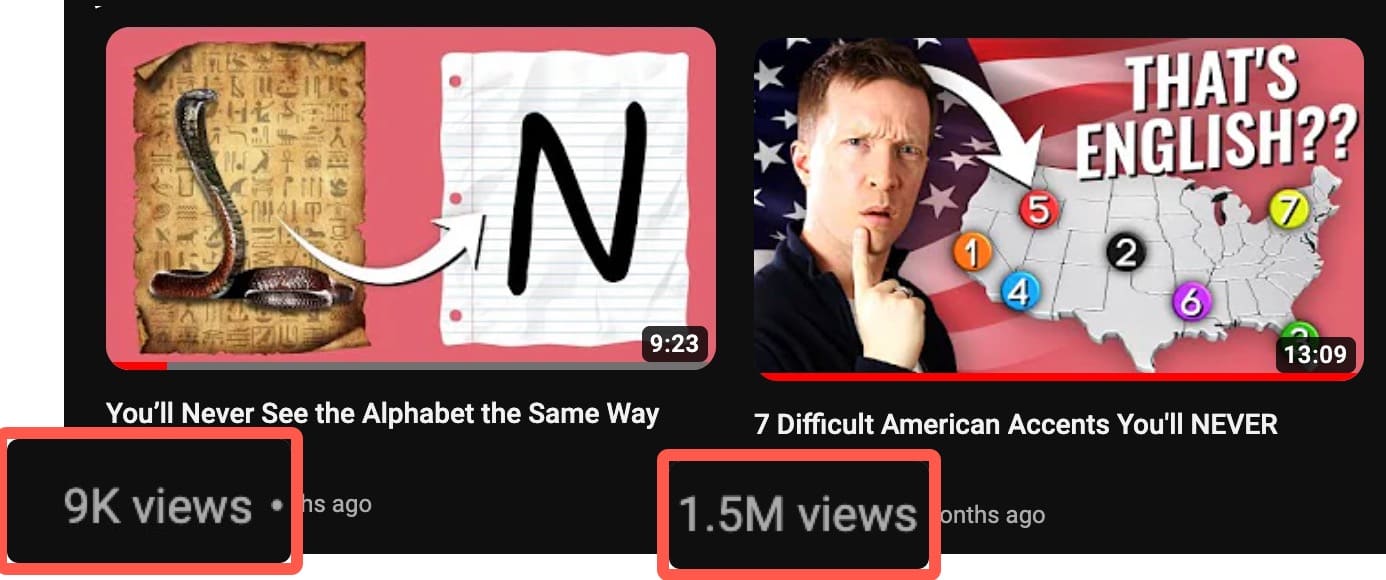
See the difference in views?
Here are two Twitter threads I wrote:
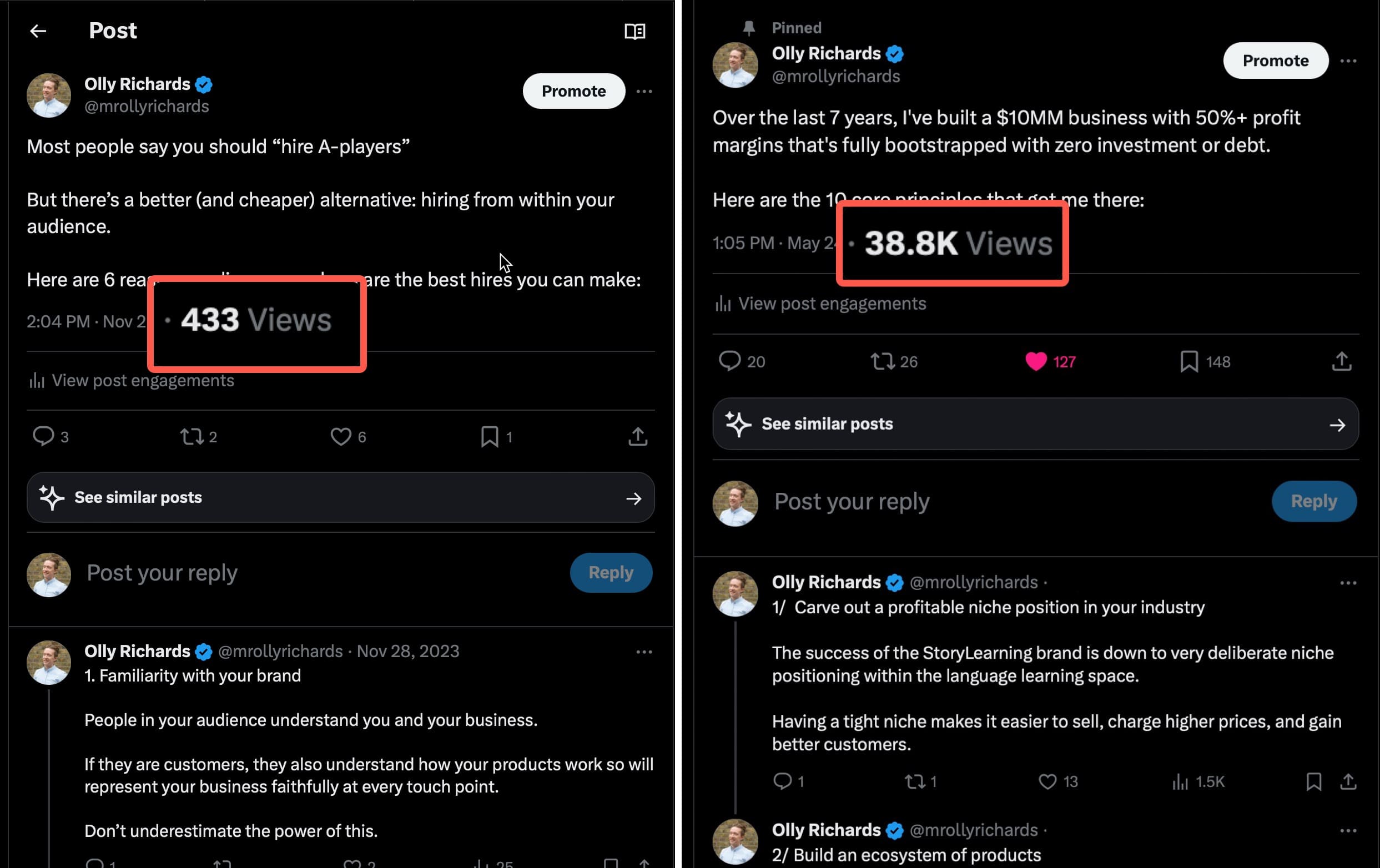
The difference in each case?
The last 5% of effort
For example:
You create 25 variations of a YouTube title/thumbnail, but it’s just not exciting enough. So you make 25 more.
You’ve spent forever crafting the perfect Twitter thread, but the hook just falls flat. So you rewrite the first tweet for the 50th time until it “sings”.
This is the final 5% of work you do…
Right at the very end.
When you’ve already busted your ass to make the content.
When you’re tired and had enough.
When your team’s staring at you through Zoom, pleading with you to just approve the damn thing, so they can go home.
That’s what makes the final 5% so hard.
And why most content creators settle for “good enough”.
But, in 2023, what I saw over and over again, was that the final 5% of effort can account for 95% of results.
EXAMPLE 1 - YouTube
At my business StoryLearning, we’ve been doing YouTube seriously for a few years now, and have 422,000 subscribers.
It drives a good amount of revenue for the business.
We’ve always made GREAT videos, but never really understood YouTube.
Case in point, at one point last year, our videos were in a real rut, averaging only 20k-odd views per video:
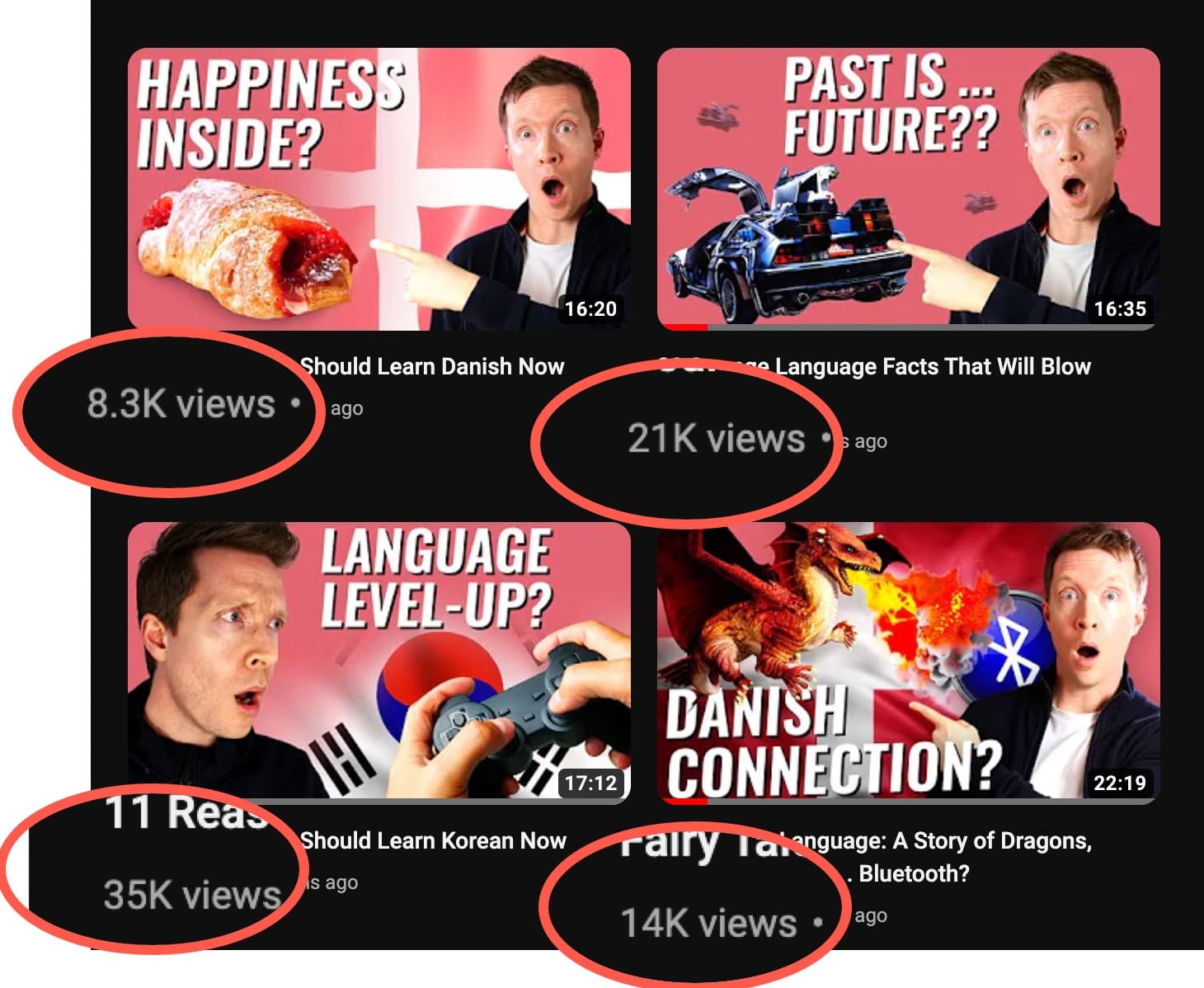
Fast-forward a few months…
Things had changed a LOT…
Averaging around 200k views per video – 10X growth:
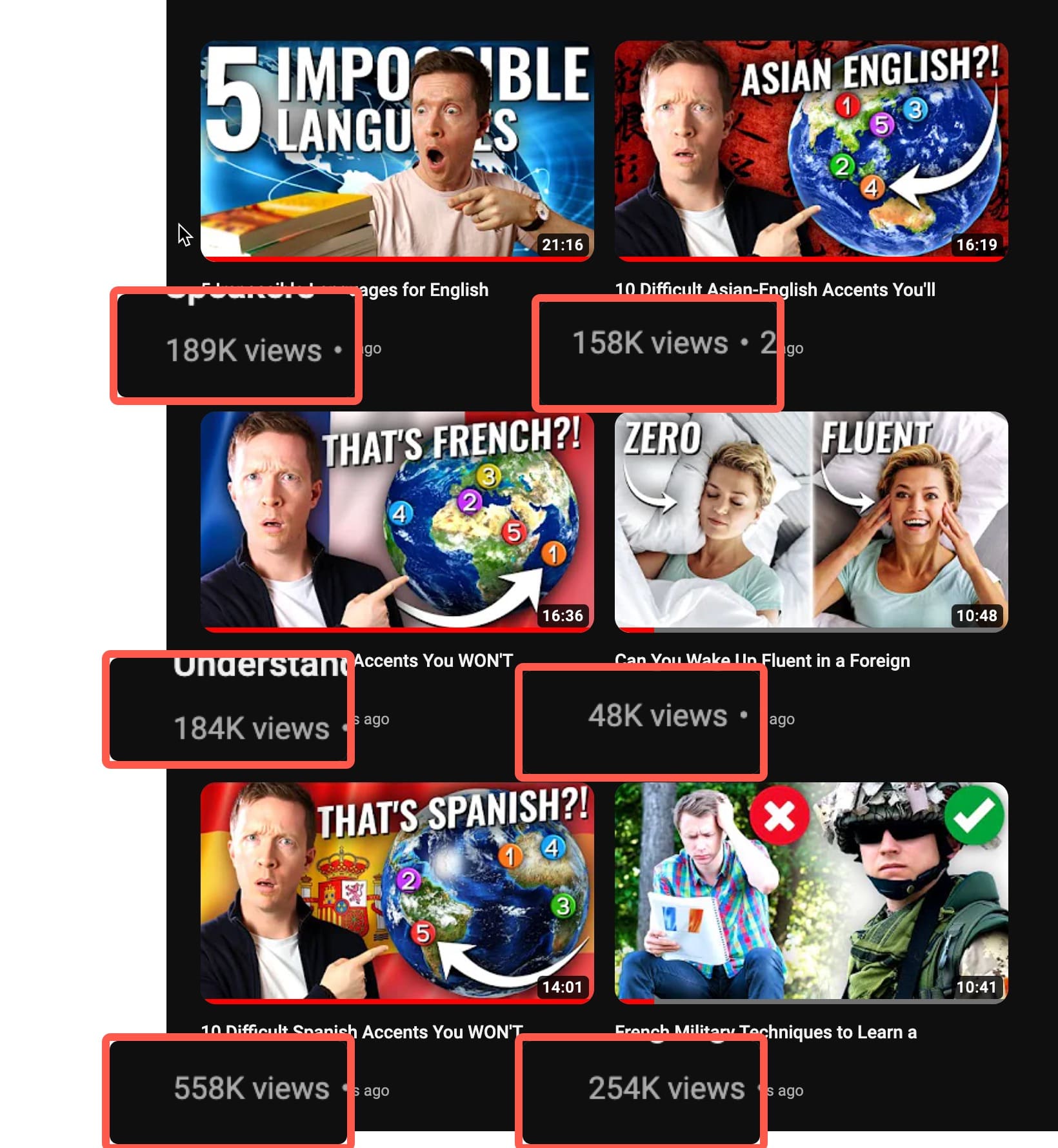
The main thing that changed:
Title and thumbnail.
Specifically, whenever we thought we were done with a T&T combo for a video – I pushed harder.
We created 20 variations.
Normally, I would have settled for one of them.
No longer.
So we created 20 more variations.
Then the details:
- change Olly’s expression on the thumbnail
- change the number of words used
- different background image
- 20 variations on the adjective we use in the title
I mean…
It was brutal.
After a week working on a video, with 5 minutes to go before publishing, we were still working on variations.
Here’s an example of the transformation from an early idea to the final idea:

But then here are all the variations that happened in-between:

Even when we thought it was perfect…
It wasn’t.
It’s the last 5% of work that makes the difference.
EXAMPLE 2 - Twitter Threads
I was brand new to Twitter last year.
Had no idea how to do it well.
But I could see that people were building massive followings on Twitter and LinkedIn, and as text-based mediums, seemed like the perfect way to complement my newsletter.
Anyway…
Threads are a big part of growing on Twitter, so I started writing threads.
Some of them did well. Most bombed.
I was confused.
I knew my content was solid, but didn’t understand how to make it go viral like everyone else.
I soon realised that it’s all down to the “hook” – the very first tweet in the thread.
If the hook doesn’t grab attention and compel you to read on, it’ll never take off.
Now, threads take time to write well. Might take an hour to craft a nice thread.
But as soon as I realised the importance of the hook, I realised that was where the “final 5%” of effort needed to go.
So I changed how I used my time:
- 50% writing the thread
- 50% iterating on the hook
It’s a crazy imbalance of time, when you think about it.
And you REALLY don’t want to do it, after spending all that time writing the actual content.
But then all content is like this…
It’s the packaging that matters.
And it’s the final 5% of effort that gets you tweets that perform like this:
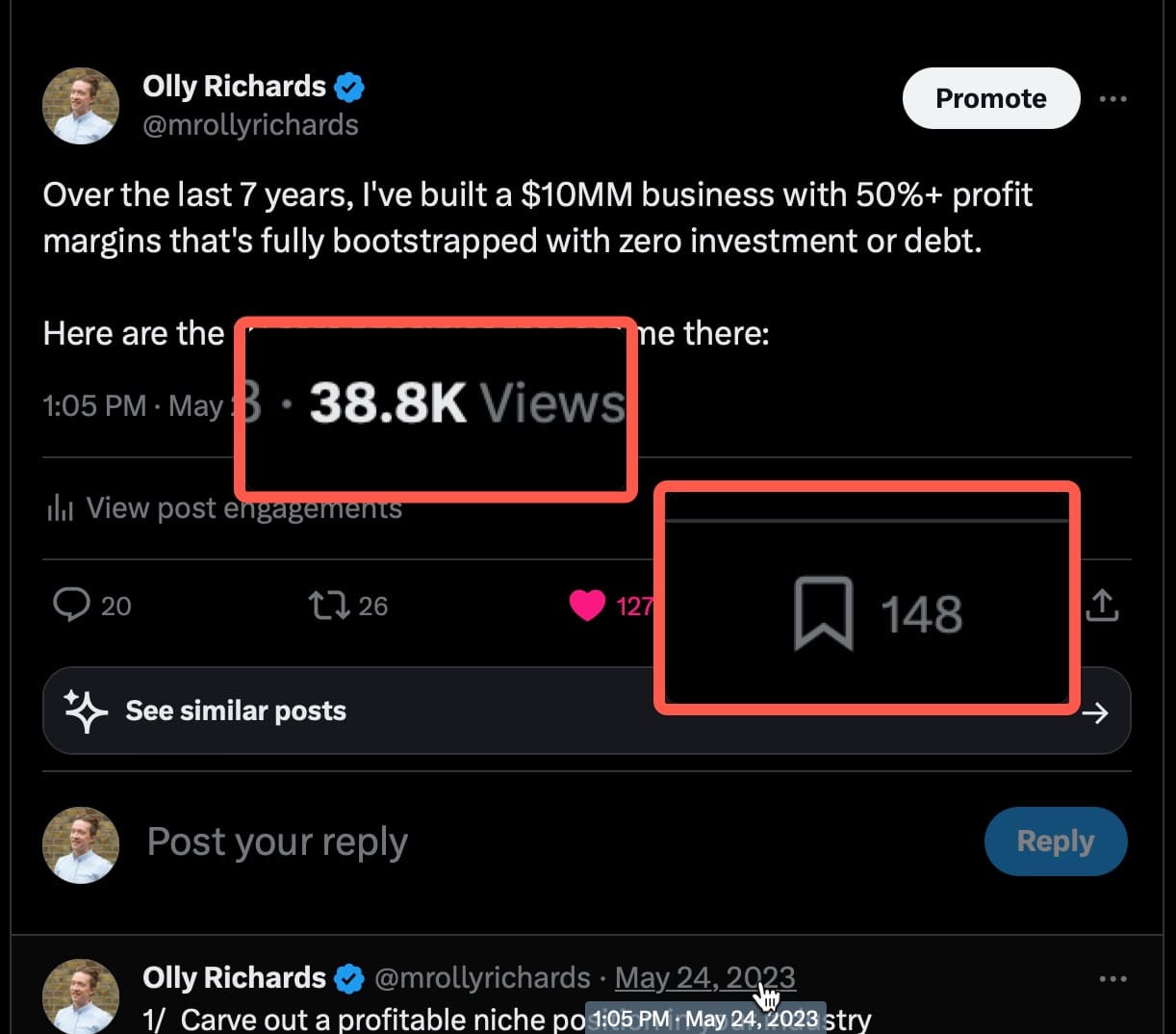
So, even after spending ages writing a beautiful thread, I would sit down and go back and forth with my social team on crafting the perfect hook.


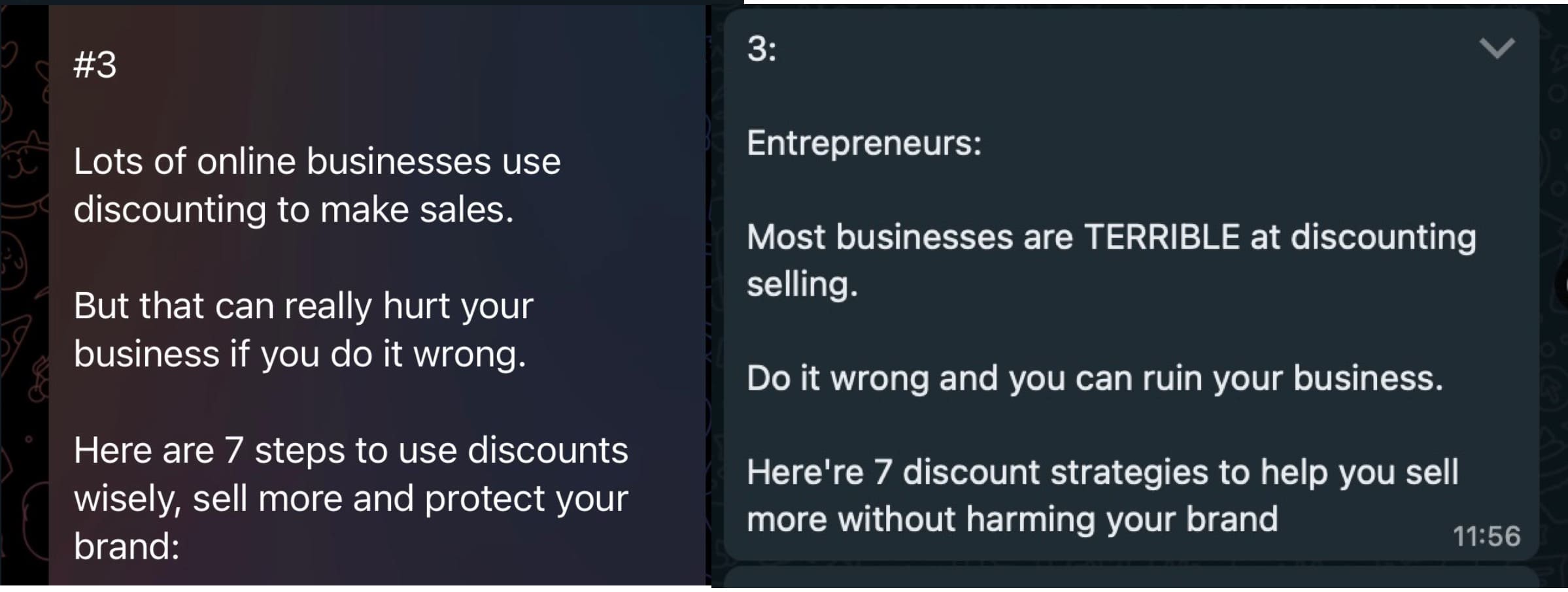
Here are some before-and-afters:
Now the point here isn’t to give you a Twitter lesson.
(I’m the last person you should listen to on Twitter)
Rather…
The point is about the final 5% of effort.
It’s the mindset.
When you think you finish, and you really want to go home, is that extra polish that makes all the difference.
EXAMPLE 3 - Writing
Here, I’m talking newsletters, blog posts etc.
I spend anywhere from 5-10 hours to write each newsletter.
(You can read my whole writing process here)
A lot of work goes into planning and writing.
Often, in newsletters like the one you’re reading now, finding images and examples takes as long as writing the damn thing, as I have to trawl back through endless archives and messages.
Point is…
After spending 10 hours writing a newsletter, you can be sure I’m ready to hit publish and have done with it.
But no.
I’m such a slave to the Final 5%, that here’s what I’ll do:
Print out the whole newsletter, read it through, and cut entire sections.
Here’s what that looks like:
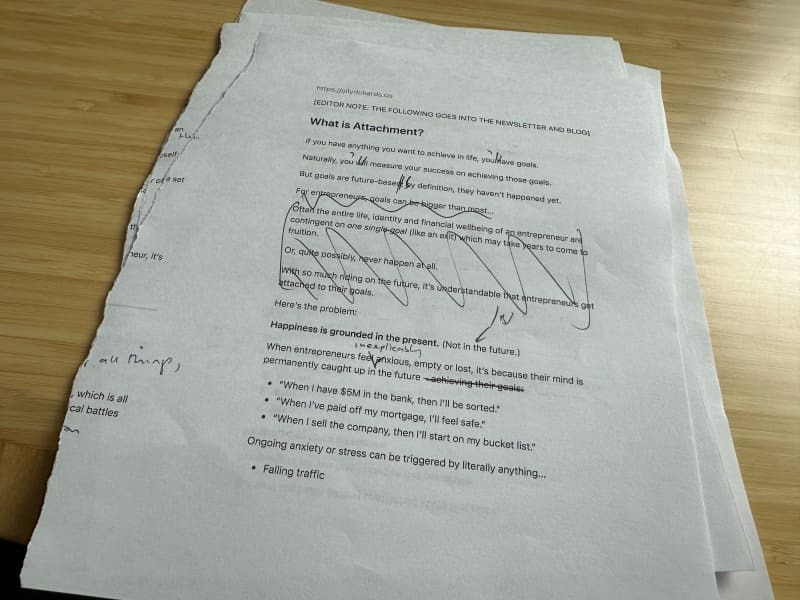
As I’m reading through my writing, I’m asking myself a simple question:
“Is this sentence absolutely necessary?”
In other words:
- does it contribute to the point I’m trying to make?
- is it coherent or is it more of a tangent?
- does it slow momentum?
- is it too dense?
Often, I will realise that an entire section of the writing is unnecessary…
Something that took me an hour to write…
But I’ll scrap it, because it serves the greater good.
But that’s not all.
Next, I’ll delete and rewrite the entire intro.
Here’s an example from a recent newsletter:
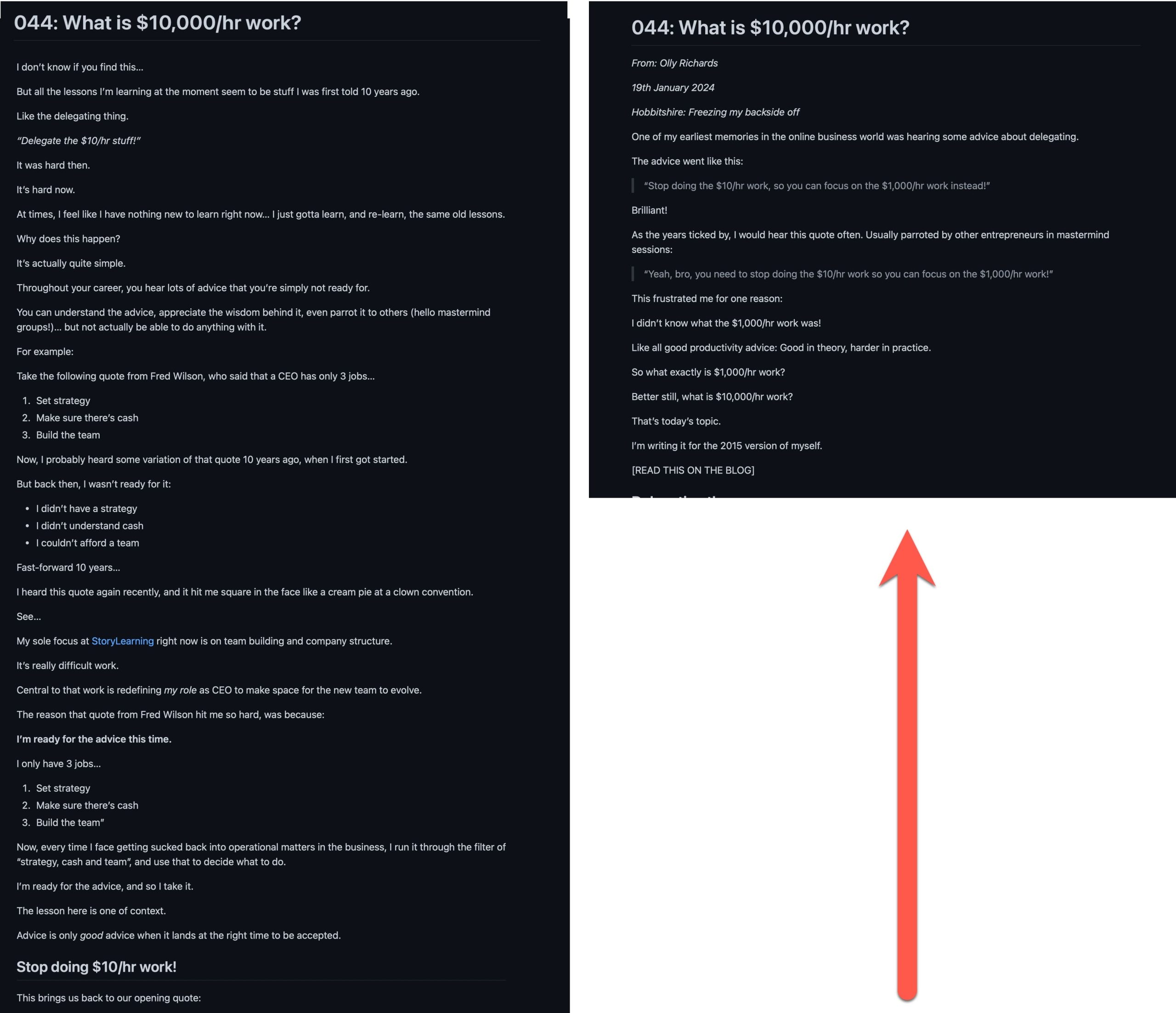
On the left is the first intro I wrote.
On the right is what it became after I took a chainsaw to it.
Why did I do this?
Because, after the headline/title, the introduction is the single most important part of any piece of writing.
If it doesn’t compel the reader to continue, the rest of the article is for nothing.
(It’s the written equivalent of the YouTube title/thumbnail, or the hook of the Twitter thread.)
For me…
The first introduction I write is never much good.
After finishing the newsletter, I have a much clearer idea of what exactly the content delivers.
That way, by rewriting the introduction, I’m able to properly frame everything that follows, which makes for a better experience for the reader.
But once again…
The point here isn’t to give you a lesson on writing.
The point is that after finishing a huge piece of work, the job isn’t done. It’s that final 5% of attention and effort that makes for world-class content.
Conclusion
Today’s newsletter was a lesson on mindset…
Disguised as a lesson on content.
It’s the concept of the “Final 5%”:
The last bit of refinement – right at the end, when you’re tired and have had enough – is what transforms good content into something exceptional.
Not because you’re creating high art.
But because you’re optimising it to be consumed by human beings.
And that’s what creates virality – both natural and algorithmic.
Why this matters:
If you consistently create outperforming content, your audience and traffic will grow exponentially.
Like my YouTube channel in 2021:
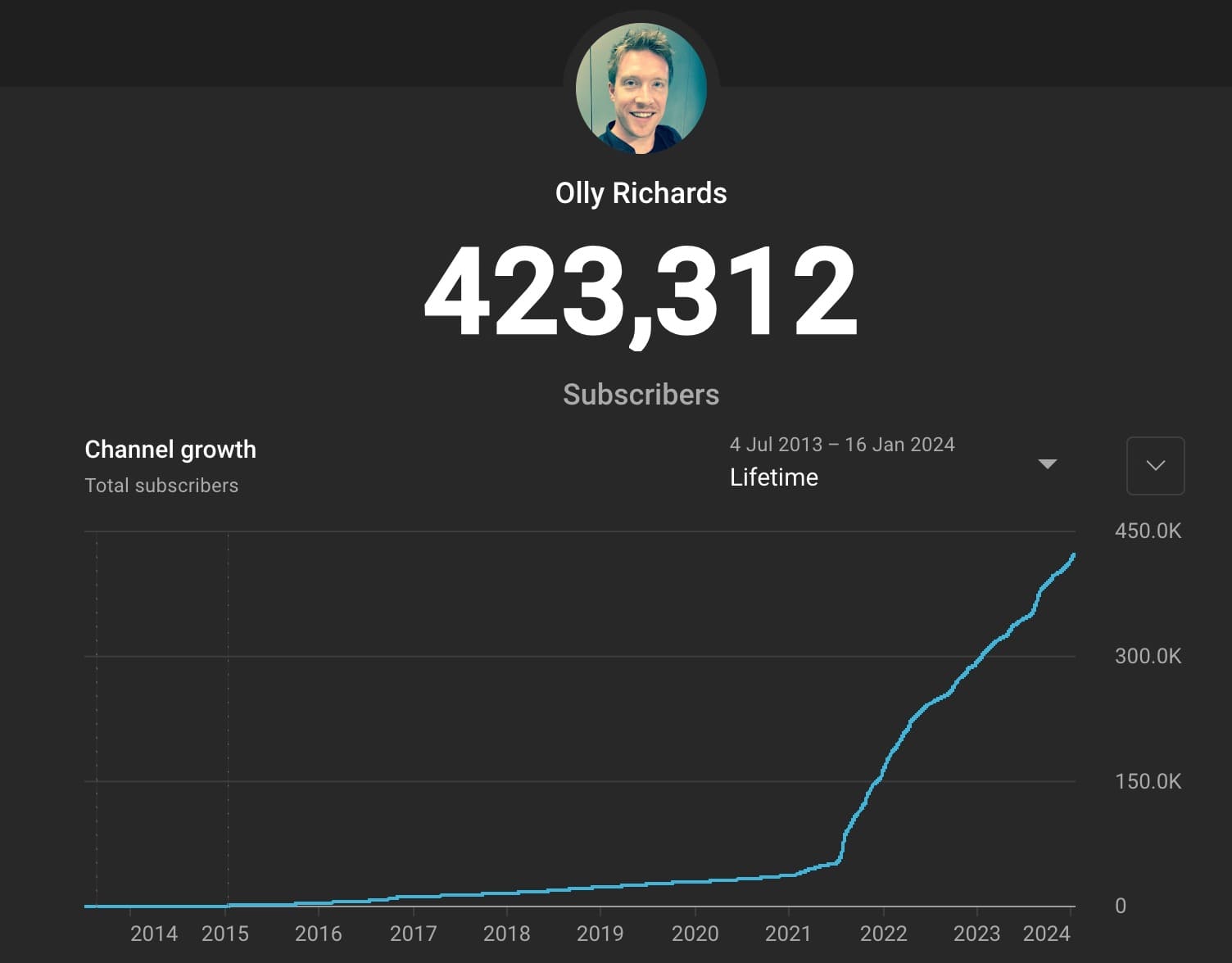
I find the concept of the “Final 5%” compelling, not because of its impact on your content, but rather on your mindset:
An insistence on being effective at what you do will permeate throughout your business.
Apply it to whatever you want:
- Product creation
- Management
- Strategy
When all’s said and done…
What’s the point of doing anything if you’re not going to be as effective as you can possibly be?
And with that, I shall leave you.
.
.
.
Not gonna lie, I found this post really difficult to write.
I’m not sure why.
Perhaps because it’s a difficult concept to get across.
Or maybe it’s just not that interesting.
Either way, hope it made you think.
Namaste,
Olly
CASE STUDY: Blueprint Of A $10m Online Education Business:
Join my free newsletter for online educators and I'll send you the case study immediately...
We will protect your data in accordance with our data policy!
